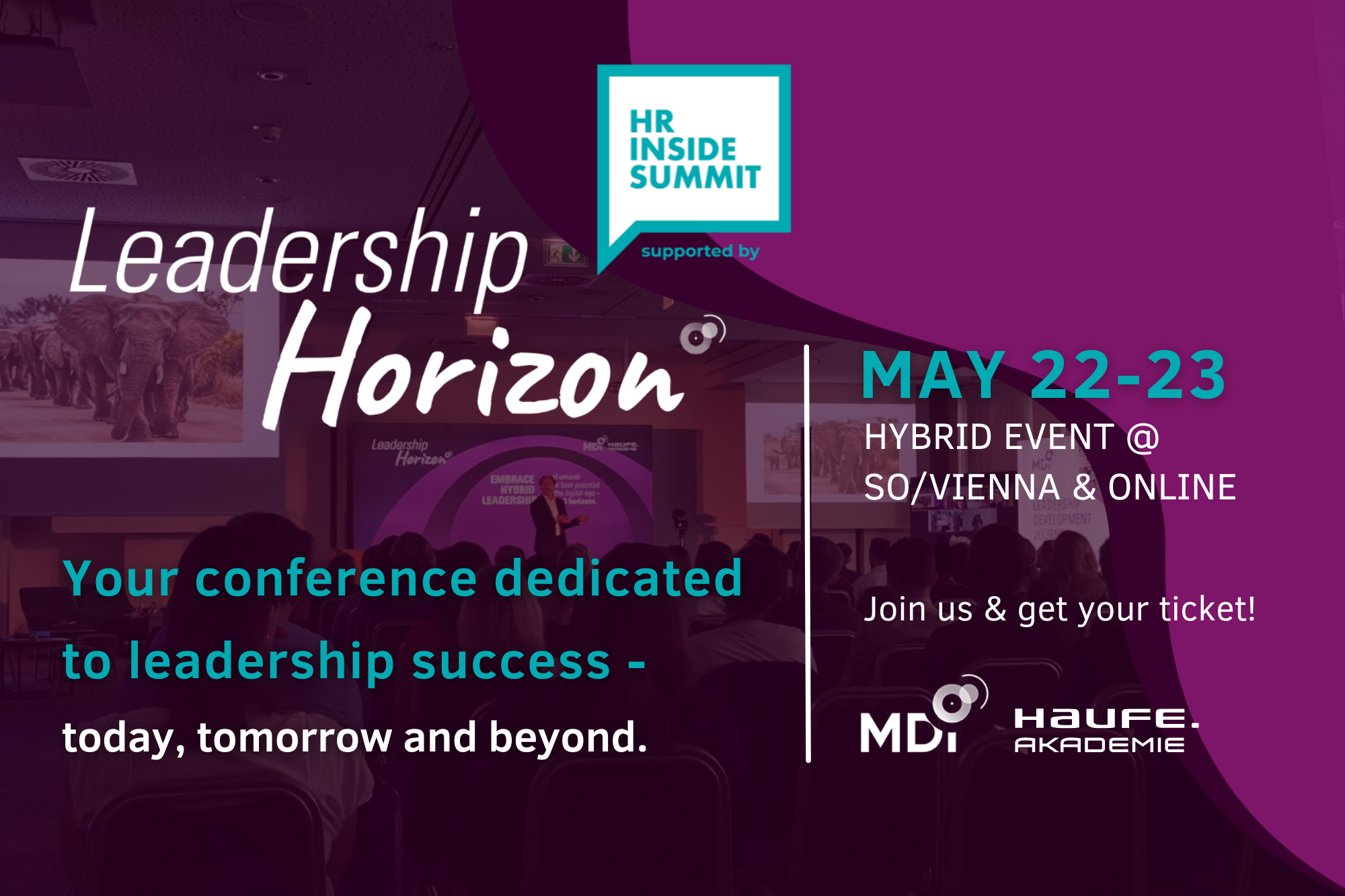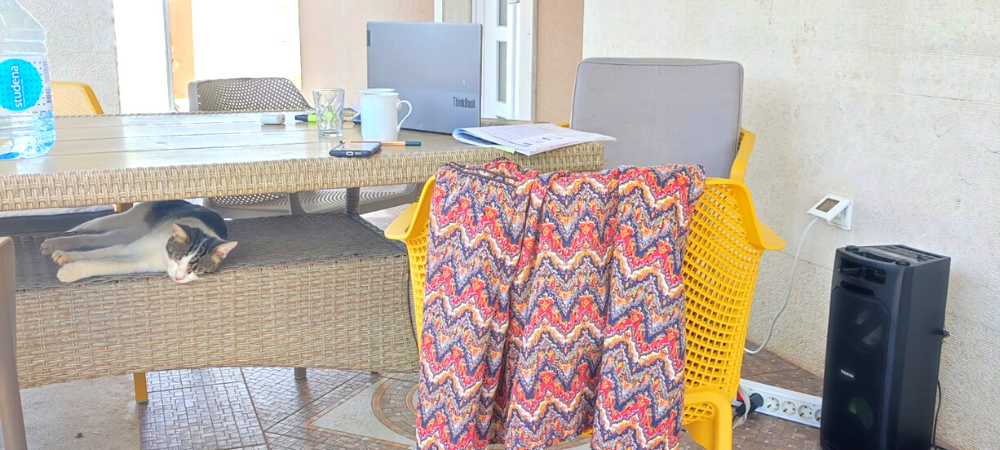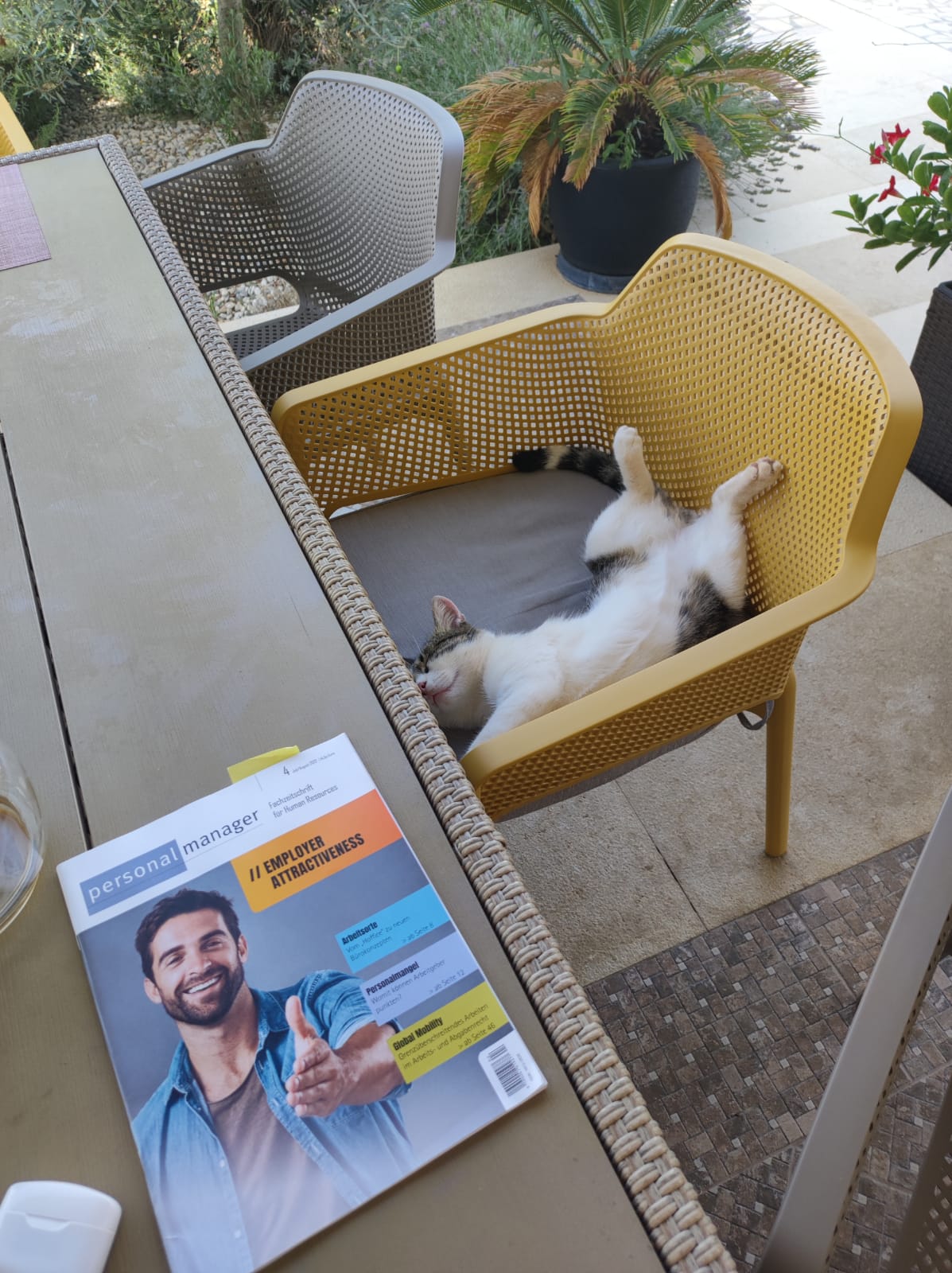
Being a servant leader – Servant Leadership
Being a servant leader
“Servant Leadership” is a concept by Robert Greenleaf that describes the manager as a servant to their employees. What this model is specifically about and what its strengths are, you can read in this article.
The origin of the approach
In Hermann Hesse’s “Morgenlandfahrt”, a spiritual seeker experiences how the disappearing servant turns out to be a true leader in retrospect. This story inspired Robert Greenleaf to develop his life’s work, the concept of serving as a leader. A number of well-known authors and CEOs of companies such as Starbucks, Nordstrom and SAS followed him in designing and practicing servant leadership.
A talent management executive at a large international corporation told me one day, “I don’t believe in the honest intent of servant leadership. To me, it seems more like a motivational ploy. In the end, the ‘servant leaders’ earn a lot more than the employees they seem to serve.”
Trick or mission? Manipulated motivation to high performance or the revolution of the working world that turns the hierarchy pyramid upside down?
Managers, especially CEOs, should ask themselves what kind of leadership culture they have and want in their own organization.
The purpose of leadership
What is the purpose of leadership? This is a good question to start a reflection on developing your own leadership culture. The why question is closely related to the „for whom” question. Which stakeholders in an organization are given priority? The shareholders, the employees, the customers? Customers, in a broader sense, can also be certain groups in society or even parts of nature for which the organization wants to create added value.
Focus on employees
Servant leadership is usually associated with a focus on employees. Greenleaf sees, among other things, employee growth as a hallmark of servant leadership. “Serving the community” is also found as a frequently mentioned goal. And then there’s the aspect of getting employees to perform at their best by serving. Shareholders understandably feel comfortable with the latter.
The desired leadership culture is derived from the purpose of the organization. If the purpose of the company is to maximize profit, then human resources tend to be seen as a mean. And servant leadership will consequently be a downstream mean to promote the purpose of “motivated, high-performing human resources.”
While the upside-down pyramid is well suited to question a culture of exploitation of the powerful over the subjugated that has been going on for ages, contradictions arise if taken to its logical conclusion. Institutionalized leadership almost always goes hand in hand with power, e.g. with the right to impose positive and negative sanctions. This makes it easier to achieve organizational goals and often also benefits the led, e.g. through higher security.
However, the history of mankind until today shows that power has often been used for one’s own advantage. And in order to maintain the privileged position of the leadership group, subtile and brutal suppression mechanisms have been used.

For the common good
The inverted pyramid thus also expresses the desire that leadership does not exploit but support and that the leader put others before themselves. For at least 2000 years there have been rulers who have called themselves servants, from Marcus Aurelius to Joseph II, Frederick the Great to Queen Elizabeth.
In this way, they have expressed how they interpret their privileged right to rule for the common good. Even if they did not donate their castles to the poor, they may have done more for the wellbeing of the people with the servant attitude than absolutist rulers with a “the–state–is–me attitude.”
There are also good arguments why a radical reversal of ruling relations and privileges would not be fair: Those who make an above-average commitment to goals that benefit others should also be entitled to a reward. This commitment can be in terms of time, talent and resources. However, it is questionable whether this justifies a CEO earning 147 times as much as a typical worker in Germany and 300 times as much in the USA.
In addition, there is the legal perspective with the legally anchored liability of the CEO. Someone has to take personal responsibility for wrong decisions and this is normally the managing director registered in the commercial register. Payment defaults or accidents can result in liability. Who bears this liability risk if we turn the pyramid upside down?
In the end, it will probably remain with individuals and they must then also have the possibility to implement decisions. We can flatten the pyramid, we can supplement it with self-coordinating networks, we can develop an empowerment culture – employees and managers can service each other – but ultimate, personal responsibility will remain.
Servant leadership in companies
Companies associated with servant leadership include Nordstrom, Fedex, Starbucks, Southwest Airlines (Herb Kelleher), SAS, and Marriott. Let’s look at what each of these companies value. In most companies, the positive impact of employees being treated well is seen in good customer service:
- For example, the first stated corporate value at Marriott is “Put people first.”
- Nordstrom also placed a lot of emphasis on customer service 120 years ago. “Do whatever it takes to take care of the customer”. (John Nordstrom 1901). This attitude has been passed down generations in the entrepreneurial family and has been enriched with humility and employee service orientation.
- FedEx has built a servant leadership culture. FedEx believes that engaged employees – individuals who trust the organizational goals and have a strong desire to contribute – will implement the organizational plan and ultimately ensure the success of the organization.
- At Starbucks, long-term CEO Howard Schultz emphasizes the company’s purpose: “Servant leadership is about serving a higher purpose, and when that higher purpose is recognized by everyone in the organization, everyone is indeed a servant of that purpose.” Kelly Creighton describes the organizational culture at Starbucks as: “A culture of belonging, inclusion and diversity.” It also always puts its employees first and encourages everyone to grow into leadership roles within the company. At Starbucks, employees are encouraged to build strong relationships with each other and collaborate and communicate openly. Employees can ask questions and reach out to their supervisors. Ultimately, Starbucks takes the view that “how you treat your employees is how you treat your customers.“
- Jim Goodnight, founder and CEO of SAS says “Treat employees as if they make a difference and they will.”
- At Southwestern Airlines, the empowerment idea is especially held dear: Colleen Barrett, former president of Southwest Airlines, explained, “Our whole leadership philosophy is very simple: treat your employees right, and good things will happen.” She assumes that Southwest Airlines has created policies, procedures and rules, but ultimately empowers its employees to use their own common sense and good judgment when needed. It trusts its employees to do the right thing when necessary and does not reprimand them for doing so. For example, if a stranded customer needs a hotel room, employees are empowered to help them if they can. And when dealing with the public, employees are encouraged to find the best solutions and approaches that make sense for the situation at hand.

Conclusion
The term “servant leadership” could be misunderstood in the sense of continuity and exclusivity. I.e., that the manager always acts as a servant to the employees and that therefore, there would be no room for the manager to be supported by the employees. This seems onesided and unrealistic. Robert Greenleaf also called his first publication “The servant as leader” and wanted to emphasize that the desire to serve should come before the desire to lead.
Just as the communist countermovement to industrial age capitalism did not yet represent the final chapter of economic history, servant leadership also offers itself more as a line of thought and less as the terminus of a leadership culture. If we understand leading and serving as polarity, then this makes it possible to find a suitable balance for the situation in the interaction between employees and managers.
Similarly, the misunderstanding would be that serving goes in one direction. Namely, that only managers should serve their employees. Transactionally, this would be a reversal of the parent-ego to child-ego relationship. Traditionally, leadership has been seen mostly patriarchal and sometimes matriarchal, i.e. the leader has to care for the children similar to parents, but can demand obedience.
The inversion of the parent-child relationship does not really work. The relationship of two adults who support each other would be more constructive. Especially nobles and rich people have servants. The term servant indicates a subordinate position. This could be resolved in a contemporary understanding of leadership: Employees and managers support each other, partly in different ways and with different means, but at eye level, with mutual appreciation.
“If you support your employees first, they will support you.”
This application of the reciprocity principle will often bring the desired, voluntary support from employees to leadership. But there is a more enduring motivation than this psychological barter: when leaders and employees pursue common goals or a shared mission out of inner conviction and support each other to the best of their ability.
Ultimately, it is the intent of the servant leader that makes the difference: Do they care at least as much about the well-being of others as they does about their own, or do they just want to make employees feel serviced so they will work harder?
The term “servant leadership” is misleading to many. But undoubtedly, one of the most important tasks of leaders is to support their employees. This starts with perceiving and listening to what the employees need from the leader.
In summary, the main meaning of Servant Leadership could be seen as a pendulum swinging away from autocratic and exploitative leadership, but not as a final leadership concept. Rather, partnership-based cooperation at eye level between employees and managers is more suitable for this in order to pursue the jointly shared corporate mission.
Sources:
• https://www.manager-magazin.de/unternehmen/karriere/ceos-verdienen-300-mal-so-viel-wie-arbeiter-a-1041409.html
• https://www.amazon.de/Spiele-Erwachsenen-Psychologie-menschlichen-Beziehungen/dp/3499613506
• https://www.amazon.de/Die-Psychologie-%C3%9Cberzeugens-Robert-Cialdini-ebook/dp/B01MUDPFCC
• https://www.marriott.com/about/culture-and-values/history.mi
• https://hrdailyadvisor.blr.com/2018/06/01/5- real-life-brands-embody-servant-leadership/ • https://www.pallikkutam.com/edu-news/servant-leadershipstories#:~:text=FedEx%20 believes%20that%20engaged%20employees,and%20ultimately%20ensure%20organi-
zational%20success.

Mag. Gunther Fürstberger
CEO | MDI Management Development International
Gunther Fürstberger is a management trainer, author and CEO of Metaforum and MDI – a global consulting company providing solutions for leadership development. His main interest is to make the world a better place through excellent leadership. He has worked for clients including ABB, Abbvie, Boehringer Ingelheim, DHL, Hornbach, PWC and Swarovski. His core competence is leadership in digital transformation. He gained his own leadership experience as HR Manager of McDonald’s Central Europe/Central Asia. At the age of 20 he already started working as a trainer.






